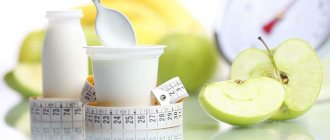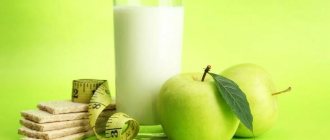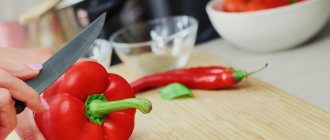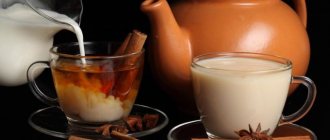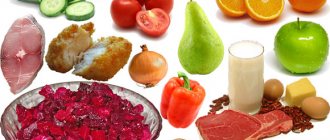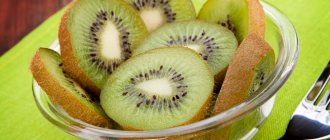Fasting days: what is the effectiveness?
Why are fasting days considered more effective than dieting?
Firstly, thanks to the psychological factor. Many people find it difficult to stay on a diet for a week, let alone for a longer period. But it will be very easy to set aside one day, gather your willpower and sit on rice. After all, you know for sure that the very next day you will again be able to eat what you want.
But will there be an effect from just one day? Yes, definitely, says both Elena Malysheva, Doctor of Medical Sciences, and the famous nutritionist Margarita Koroleva. Why?
It's simple: during this day, the intestines will begin to cleanse themselves of toxins, the stomach will decrease in volume, and the body will begin to draw energy from stored fat reserves.
As a result, the next day after the fasting day you will no longer want to eat your usual portion of food; it will definitely be smaller. The intestines will start working with renewed vigor. And fat reserves will continue to be broken down even if you return to your normal diet.
Rice is an almost magical grain
Among the many foods that have “miraculous” properties, rice is especially popular.
Small grains are a huge treasure trove of valuable vitamins, minerals, and nutrients that are vital for the full functioning of the body. Valuable properties of rice:
- Rice grains contain potassium, which helps remove water from the body, and sodium, which retains water. Due to the fact that sodium is 5 times less than potassium, eating rice perfectly relieves swelling.
- Lecithin improves blood circulation and helps increase brain activity.
- Fiber – has cleansing properties and normalizes the functioning of the gastrointestinal tract.
- Phosphorus is responsible for the integrity of tooth enamel and bone tissue, as well as the psycho-emotional balance in the body.
- Zinc is needed for the growth and development of the body. A deficiency of this element during adolescence can negatively affect puberty. Good vision is impossible with zinc deficiency.
- Iron provides the blood with oxygen and promotes the removal of carbon dioxide.
- Calcium is the main element that makes up bones and teeth. A lack of calcium in the body leads to osteoporosis, an increased risk of fractures and cracks in bones, and tooth decay.
- B vitamins strengthen the nervous system, promote good condition of hair, nails, skin, and vision.
The list can be endless, but even these properties are enough to understand how valuable a product rice is. In addition, cereals are very nutritious, so you don’t have to go hungry.
Honey
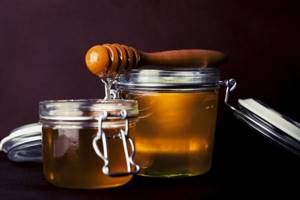
Another addition to the porridge that will give it sweetness. In small quantities in the morning, honey will only benefit the body. It has an antibacterial effect, maintains the health of the mucous membranes of the mouth and stomach, and improves the production of digestive enzymes.
Add honey to the finished porridge without heat treatment.
How to cook rice so as not to lose its beneficial properties
There is a myth that rice can be cooked without cooking. In fact, this is not true. If buckwheat can be filled with water and eaten after 8-12 hours, then this will not work with rice. So how to cook rice so that it does not lose its beneficial properties? There is only one secret - cook the rice over low heat with the lid tightly closed.
Healthy recipes with rice
There are a great many recipes for preparing dishes from this cereal, including medicinal and dietary ones. We will offer only one recipe, which can rightfully be called the most useful.
Beneficial features
Rice provides the body with energy and helps increase muscle mass. The vitamins it contains (group B and PP) have a positive effect on digestion. The ability to envelop the gastric wall with a shell allows rice to be used by patients with gastritis and peptic ulcers.
It has the ability to remove toxic substances
from the body during intoxication. The absence of salts in it does not harm people with kidney disease when consumed.
High levels of neurotransmitters (especially in brown rice) may prevent Alzheimer's disease
. It has an antioxidant effect, reduces cholesterol levels and has a strengthening effect on the nervous system.
quickly relieves hunger
due to the complex carbohydrates it contains. Unpolished rice (the one that is less processed) is considered more valuable. It manages to preserve more B vitamins, which are almost absent in polished. Regular consumption of rice stimulates male potency.
Benefits of using rice:
- when the intestines are damaged by the inflammatory process, rice broth has an enveloping effect;
- removes toxins;
- the potassium contained strengthens the heart muscle;
- has a mild diuretic effect, promotes the removal of excess fluid, which has a beneficial effect on blood vessels;
- improves metabolic processes in nerve tissues due to tryptophan and lecithin;
- normalizes brain functions, prevents Parkinson's disease, senile dementia;
- rice water helps remove mucus from the lungs, recommended for bronchial asthma;
- with, relieves the condition, has an antipyretic, diaphoretic effect.
Benefits of eating brown rice:
- reduces acidity, improves digestion;
- prevents development;
- regulates fat and carbohydrate metabolism, cholesterol levels in the blood;
- improves the activity of the endocrine system;
- removes toxins, radionuclides;
- cleanses blood vessels.
Rice super diet: what you can eat
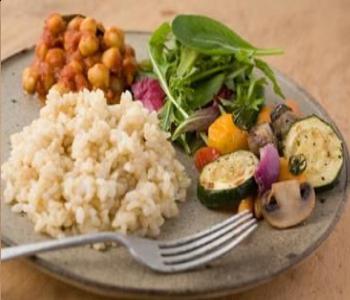
What should you consider when creating a menu? Rice is the main, but not the only product. It is best to use the brown variety. Its calorie content per 100 grams is only 109 kcal.
To successfully lose weight and remove toxins from the body, you must follow a drinking regime - 2-2.5 liters of fluid per day. This can be herbal or green tea (without sweeteners), plain water, or apple juice diluted with water. If there is insufficient water intake in the body, constipation is possible.
The rice diet allows for the use of a minimal amount of salt. It is added to food before consumption. To avoid health problems, you should take vitamin and mineral complexes containing potassium. This element ensures normal heart function.
There are several options for rice diets. Each of them provides its own list of permitted products. The best results can be achieved with a strict rice diet (10 kg per week). But few girls can tolerate a diet consisting only of rice. However, it can be varied with two or three green apples.
Rice porrige
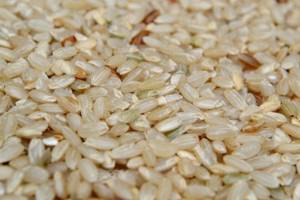
Rice is a carbohydrate product that will provide the body with energy. Add milk to it and you will get a delicious, nutritious and healthy breakfast. But only if you cook porridge from unpolished brown or brown rice. White, although it boils quickly and seems more tender, does not bring any benefit to the body, since all valuable substances from the cereal are removed along with the cereal shells.
Unsalted rice benefits. Benefits of unsalted rice for joints
if you eat it they say the joints are restored. In any case, they say that it washes out all sorts of rubbish from the joints and is fed to all kinds of arthritic and other patients. Is this so, a question for knowledgeable people.
yes zhora scheme you need 4 containers for soaking 1st day - soak 4 spoons of rice 2nd day - change the water in the first glass, soak another 4 spoons in another glass 3rd day - change the water in the first 2 glasses, soak 3rd 4th day - change the water in 3 glasses, soak for 4-1 5 days - cook rice from the first glass for breakfast (without salt! soak a new batch, change the water in the rest; eat rice instead of breakfast, full lunch and dinner for 40 days, once a year about yourself. Method I couldn’t handle it (it was difficult to soak)
Why the hell are there so many soakings?
Apparently they are trying to soak the starch
Awesome!
yes, don’t eat or drink there yet for at least 2 hours after eating, they recommend taking extra calcium
Well, rice seems to wash away calcium, I’ve heard about that.
That’s why you should take it additionally, if you suddenly manage, write the result, I’ll also decide
No, I’ll just eat unsalted rice purely, but soaking it is too much for me.
Why is starch bad?
What then is the meaning of unsaltedness?
is that people are stupid. I suspect that there is no clinical testing of this method. Pure OBS.
Salt itself is deposited and harms the joints; I think there is no particular need to use it during the “treatment” period. if you don't read the offtopic and this seems to be true
Well, my brother’s wife suffered from such nonsense - it was her diet that was like that. I really lost weight, by the way. But I didn’t even know about the vessels.
I haven’t heard about soaking so seriously, but I heard that the Japanese/Chinese do this (they eat unsalted rice in the morning on an empty stomach for n days to remove excess salt from the joints (so that they don’t crunch).
She lost weight due to the fact that excess water left the body (unsalted rice also contributes to this)
Or because for breakfast I didn’t bite off half a kilo of potatoes, but a handful of rice.
Salt in the joints is a 5. Maybe it’s easier to drink beer in this situation?
The funny thing is that mostly uric acid salts are deposited in the joints, and not sodium chloride aka table salt. It’s surprising that despite this, switching to a salt-free diet helps the joints
Soak it, soak it, don’t get smart
Gentlemen, please describe the recipe in detail again. and another question - what if I use brown instead of white (I only buy Mistral - Indica Brown)? It’s supposed to be hotter, it probably needs to be soaked longer (you should try it as much as you like).
Why is brown better?
Rice therapy Actually, I learned this diet a long time ago... At least, as far as I know, Gennady Statsenko brought it to Gorky back in those distant times when Yoga as such was banned, and groups of like-minded people were called Health Groups. Or not that he brought it. I learned about it somewhere in 88-90, already from my Teacher. It should be noted that this diet is aimed primarily at preventing diseases of the musculoskeletal system. Good results for arthritis and osteochondrosis. And, accordingly, I strongly recommended it to my patients. The most interesting thing is that over time, a pattern became noticeable - in addition to osteochondrosis and various joint diseases, it became clear that against the background of the “Rice Therapy” diet, adherents (those who decided to use it) simultaneously lost weight! The point is this. Take 2 kg of Brown or Unpolished rice. Four regular glasses or jars, numbered from 1 to 4. Every day, 2-3 tablespoons of rice are poured into the glass. Wash thoroughly. Fill with clean cold water. The next day the second jar is the same. In the first, the rice is thoroughly washed. Etc. On the 5th day, the rice from the first glass is washed and porridge is cooked from it, and a new portion of rice is poured into the empty glass. That. the procedure is repeated every four days until the rice runs out, usually about 30-40 days. Porridge is cooked in water without salt, spices, sugar, butter, etc. Eat for breakfast on an empty stomach. Drink 1-3 glasses of water first. After eating porridge, do not drink or eat for 4 hours. After this, drink a glass of water and you can eat. Before bed, during the day, drink more water than usual (up to 2-3 liters). Meals are preferably vegetarian. It is necessary to sharply limit the consumption of salt and spices, i.e. salt-free diet for this entire time. There are no contraindications, but maybe “crises” - increased pain for a while, symptoms of intoxication. In this case, increase your water consumption. There is experience using this therapy during pregnancy (about 4-5 months). With all of the above, I want to note: this technique is not a textbook on medicine. When using it for treatment, all recommendations must be agreed upon with the attending physician.
"5 volumes"
The rules of this diet are simple. We put five glasses on the table. Pour two tablespoons of brown rice into each of them and pour in two hundred milliliters of water. It can be warm, but not hot. We change the water in the glasses for four days. And on the fifth day we proceed as follows. We drain the liquid from the first glass and eat the rice without boiling it. What's next? Fill this glass with rice and water. Set aside. The next morning, drain the water from the second glass and eat the rice from it. We hope that you understand the further scheme.
To get the maximum effect, you should eat the soaked rice on an empty stomach. Then you can eat as usual. We are talking about healthy food, not smoked meats, pickles and fast food. The duration of the “5 volumes” diet is 14 days. During this time you will get visible results.
What to expect from the rice diet
One of the main advantages of rice for weight loss is that it is a powerful enterosorbent. That is why rice porridge is allowed to be eaten even by those recovering from poisoning. Just as rice grains absorb sauces and broths, they absorb harmful contents of the stomach and intestines, helping to “cleanse” the rice diet. However, there is also a negative effect: having the property of collecting moisture, rice can cause constipation.
When deciding on a rice diet, remember this not the most pleasant prospect and combine rice with plenty of liquid, vegetables and fruits that promote intestinal contractions. Brown rice contains a lot of valuable zinc, silicon and magnesium, which are useful for the smooth functioning of internal organs and maintaining immunity.
A high level of potassium determines the ability of rice to “pull out” water, which is why it is recommended for edema of various origins, the appearance of phlegm in the lungs and bronchi, and so on. Rice contains lecithin, which is especially beneficial for nursing mothers, and does not contain the protein gluten, intolerance of which many adults and children suffer.
The rice diet is a great way to experience all the benefits of this product in practice.
Which rice is best for losing weight and cleansing the body?
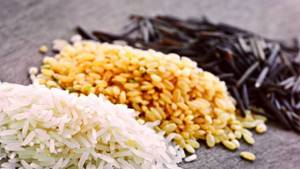
Cleansing the body with rice gives an excellent effect, but if you have chronic diseases or problems with the gastrointestinal tract, you should use it with caution. Rice cleansing should not be used by people suffering from hemorrhoids or constipation. During the rice cleansing period, it is advisable to avoid activities that require increased concentration, since dizziness and weakness are common.
It is better to prefer cleansing with brown rice to using ordinary white rice, since more nutrients are retained in unpeeled and unpolished rice.
If you have a healthy stomach, it is better to perform a rice cleanse using raw rice grains. Rice that has not undergone heat treatment absorbs harmful salts and toxins much better.
Cleansing the body with rice helps get rid of obesity and joint pain, helps in the treatment of hypertension, atherosclerosis, diabetes and heart disease, and helps improve overall well-being. But before you start using rice for cleansing, it is advisable to consult your doctor for any contraindications.
Are there any harms and contraindications?
There are no contraindications for the use of rice. If you are individually intolerant to the product, you should stop using it.
Rice contains a lot of starch, which can cause an increase in blood sugar levels. Excessive use may lead to deterioration of intestinal function and constipation. If you have a tendency to constipation, cracks in the large intestine and hemorrhoids may appear.
People suffering from diabetes are recommended to eat brown rice instead of white rice, which has a lower glycemic index.
Is it safe to eat raw rice? Useful tips
Rice is a staple food in many countries around the world.
It is inexpensive, a good source of energy, and comes in many varieties. Although rice is usually cooked before consumption, some people wonder if it is safe to eat raw rice and whether it is healthy. The fashion for a raw food diet gives rise to many questions, which we will answer in this article and answer whether it is possible to eat raw rice...
Risks of consuming raw rice
Eating raw rice may be associated with some risks to the digestive system. For example, such as poisoning, indigestion, abdominal pain and Pick's disorder.
If you are interested in a raw food diet, it is safe to eat raw rice only sprouted! In other cases, you risk developing the following health problems...
Poisoning
Uncooked rice may contain harmful bacteria such as Bacillus cereus. In fact, one study found that B. cereus was present in nearly half of a commercial rice sample.
B. cereus is a type of bacteria that is commonly found in soil and can contaminate uncooked rice. These bacteria can form spores, which can serve as a shield allowing B. cereus to survive cooking.
However, this bacterium is generally not a problem in freshly cooked rice because high temperatures prevent its growth.
Food poisoning associated with B. cereus may cause symptoms such as nausea, vomiting, stomach cramps, or diarrhea within 15 to 30 minutes of consumption.
Gastrointestinal problems
Raw rice has several compounds that can cause digestive problems. For starters, it contains lectins, a type of protein that acts as a natural insecticide. Lectins are sometimes called antinutrients because they can reduce your body's ability to absorb nutrients.
Humans are unable to digest lectins, so they pass through the digestive tract unchanged and can damage the intestinal wall. This can lead to symptoms such as diarrhea and vomiting. Typically, when rice is cooked, most of these lectins are removed by heat.
Other health problems
In some cases, cravings for uncooked rice may be a sign of an eating disorder known as Pick disorder - an appetite for non-nutritive foods or substances.
Although pica is rare, it is more common in children and pregnant women. In most cases, this phenomenon is temporary and associated with a deficiency of certain alkaline microelements, and sometimes requires psychological consultation.
Eating large amounts of unprocessed rice due to Pica has been linked to side effects such as fatigue, stomach pain, hair loss, dental damage and iron deficiency anemia.
If you suspect that you or someone you know may have Pica, it is important to see a doctor as the condition can cause serious health complications.
Are there any benefits to consuming raw rice?
Consuming raw rice, especially white rice, does not have any health benefits for humans.
Moreover, consumption of raw rice has been associated with many adverse health effects, such as dental damage, hair loss, abdominal pain and iron deficiency anemia.
In recent years, raw food diets have become increasingly popular as proponents claim they offer more health benefits, but this is not the case with raw white rice.
If you like rice and want to get more benefits from it, try switching to brown, brown, black, red or wild rice.
Unpolished brown rice contains much more beneficial nutrients than milled white rice. The inner husk of rice consists mainly of starch and is poor in minerals.
Compared to white rice, these varieties tend to contain more antioxidants, minerals and vitamins, especially B vitamins.
Benefits of eating sprouted rice
It is healthier to eat sprouted rice than raw rice. During the germination process, dry, lifeless grain is radically transformed and filled with valuable vitamins and microelements.
In raw grains, all nutrients are bound by phytic acid, which blocks their absorption in the intestines. This acid is needed to preserve the growth potential of the grain until it enters a favorable environment and grows.
This is a kind of protective mechanism of nature, which allows the seed to produce a harvest, even after it is eaten by animals or birds.
Sprouting rice is a popular national activity in Japan; the Japanese consider this simple dish a source of health, strength and longevity. After germination, all beneficial substances pass into an easily accessible form and are easily absorbed by the body.
Eating sprouted rice grains cleanses the blood, balances the acid-base balance, reduces bad cholesterol, normalizes blood pressure, calms the nervous system, improves muscle tone and smoothes the skin. In nursing mothers, lactation increases significantly. Rice also has a beneficial effect on the digestive system, normalizing the intestinal microflora and cleansing it of toxins.
Conclusion
Consumption of raw rice is unsafe and causes a number of health problems such as B. cereus food poisoning and damage to the digestive tract.
A craving for uncooked rice or other low-calorie foods may be a major symptom of pica disorder, often associated with certain mineral deficiencies that can cause hair loss, fatigue, abdominal pain, and iron deficiency anemia.
Additionally, uncooked rice is no more nutritious than cooked rice. If you just want to use healthier rice, try switching to brown, unpolished, black, red or wild rice.
But if you still decide to eat raw rice, it is better to pre-soak it for at least a day, and it is better to sprout it.
Source: https://bud-zdorow.ru/pitanie/syroy-ris/
Rice on an empty stomach in the morning. Recommendations

How to properly clean rice at home? A few general points will help you figure it out.
What kind of rice is best to use?
- Red (variety called "Ruby")
During production, it only peels off, but is not polished, due to which it contains many useful substances and is quite suitable for cleansing the body.
- White
It loses its beneficial properties twice: when it is polished during production and during cooking. After this, it is starch in its pure form. It is better not to use it to remove salts and toxins.
- Brown (aka black, or wild)
An ideal option for cleansing the body. Its processing during production is minimal, contains all the necessary useful substances and retains its crystal lattice intact.
- Indian (naval)
Has nothing to do with cereals. This is a bacterium called zooglea, which looks like grains of rice. It is a mushroom grown at home in a jar. Its infusion perfectly cleanses the body, as it is an excellent natural diuretic.
- Steamed
Can be used to remove waste and toxins, but do not get carried away.
- Basmati
If you do not cook and choose steamed, it will also be suitable for this procedure. It is more easily absorbed by the body than other varieties.
What type of rice to choose for weight loss, how to organize a diet and what dishes to prepare? About this in the article at the link.
Deadlines
The duration of the course depends on its purpose. If the goal is to get rid of salt deposits in the joints, then you will have to carry out the procedure for 2 months and it will be possible to repeat it only after 2 years. If you need a standard cleansing (of the whole body or a specific organ), everything will be much faster: from 1 day to 1 month.
Cooking method
Milk porridge for breakfast, fatty pilaf for lunch, a nutritious side dish for dinner - all these dishes are useless in terms of cleansing. To achieve the result, the grain is pre-soaked. The need for such a condition is explained scientifically. The structure of this cereal is a crystal lattice, between the nodes of which there are gluten and starch. The water washes them away and the cells begin to be visible quite clearly. This protects the cereal from complete digestion in the gastrointestinal tract. Once in the intestines, it acts like a sponge.
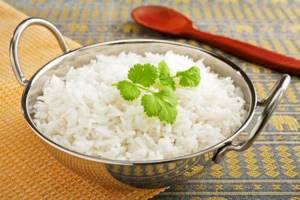
Rice for cleansing the body should be cooked until al dente, i.e. slightly undercooked, hard
When boiled, starch and gluten are firmly fixed in the lattice, blurring its boundaries, and the cereal can no longer absorb anything. Therefore, the only thing that is allowed when cleaning is to boil the rice for no more than 5 minutes so that it remains hard. This condition is called al dente.
Nutrition
When cleansing the body, it is necessary to give up salt (this is a categorical prohibition, if you violate it, do not expect results). You will also have to limit fatty meat, sausages, smoked meats, fast food, snacks, spicy foods, and alcohol.
The heart may not have enough potassium, which will be excreted along with salts. Therefore, eat more foods rich in it: potatoes, dried apricots, raisins, bananas, apple cider vinegar, honey, tea, whole grain cereals, herbs, nuts. Replenishing potassium through medications is possible, but only with the permission of a doctor.
Little life hacks
- An hour before eating rice, eat an apple - this will enhance the cleansing effect.
- After a month of active cleansing, the urine will become cloudy from salts, an incomprehensible mucus will be visible in it - this should not scare you, as harmful substances begin to come out. The effect can last up to 3 months.
- Do not combine rice cleansing with other detoxification methods or diets.
- If you smoke, you may not expect results. Rice will have to fight new toxins, not old ones.
- If you feel worse, the procedure should be stopped and seek help from a doctor.
- 2 liters of clean water per day will help improve the cleansing effect of rice.
- It is advisable to consume rice in the morning, on an empty stomach. After this, it is not recommended to eat for 3 hours.
